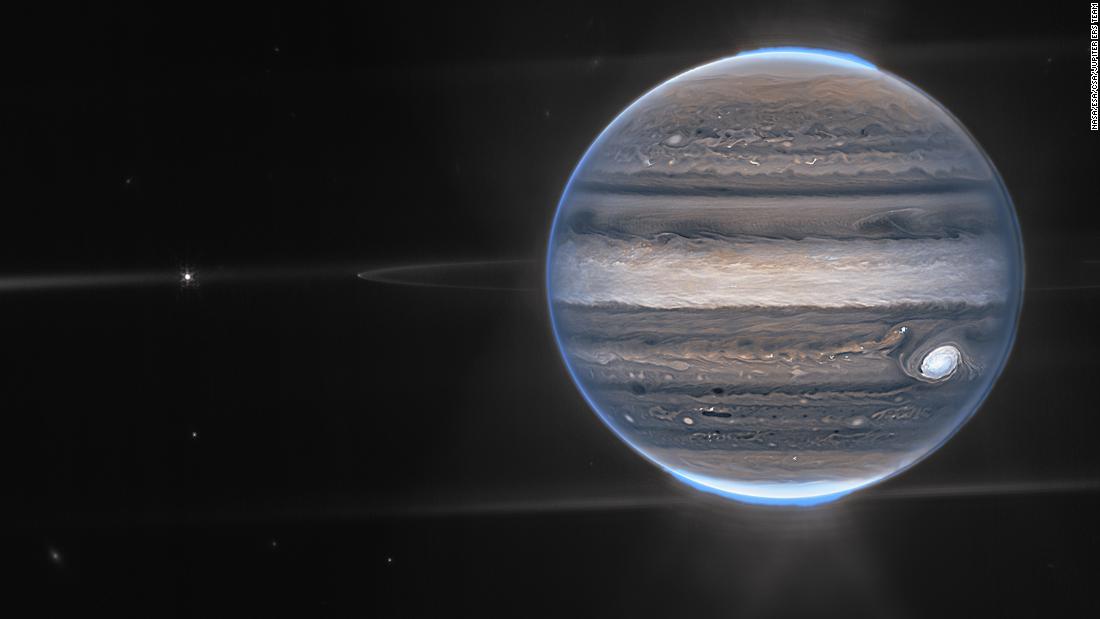Even scientists didn’t expect Webb telescope images of Jupiter to be this good
“We hadn’t really expected it to be this good, to be honest,” said planetary astronomer Imke de Pater, professor emerita at the University of California, Berkeley, in a news release.
De Pater and Thierry Fouchet, a professor at the Paris Observatory, led observations of the largest planet in our solar system using the Webb telescope — which is itself an international endeavor by NASA with the European Space Agency and Canadian Space Agency, NASA said.
Painting a picture that moves from orange and yellow at Jupiter’s poles to blues and purples toward the center, several images from the telescope came together to form an overall composite and give Earth a look at the gas giant.
You can also see faint rings and far off galaxies “photobombing” in the background, according to NASA.
And Jupiter’s famous Great Red Spot — a storm big enough to engulf Earth — appears white in these images.
“The numerous bright white ‘spots’ and ‘streaks’ are likely very high-altitude cloud tops of condensed convective storms,” said Heidi Hammel, Webb interdisciplinary scientist for solar system observations and vice president for science at the Association of Universities for Research in Astronomy.
Scientists collaborated with citizen scientist Judy Schmidt to translate data to form the composite images from the telescope, which help give a better look into Jupiter’s life, NASA said.
Jupiter is hard to translate into images because of how quickly it rotates, said Schmidt, who’s based in Modesto, California.
“This one image sums up the science of our Jupiter system program, which studies the dynamics and chemistry of Jupiter itself, its rings, and its satellite system,” Fouchet said.
But Jupiter isn’t Webb’s only subject. The space telescope is using infrared light to reveal otherwise invisible aspects of the universe.
Development of the world’s premier space observatory began in 2004, and after years of delays, the telescope and its massive gold mirror finally launched on December 25, 2021.
The telescope is also discovering and observing exoplanetary systems, which each consist of a planet outside of our solar system and its host star.
Some of these exoplanets are potentially habitable, and peering into their atmosphere could uncover clues in the ongoing search for life outside of Earth.
CNN’s Ashley Strickland and Megan Marples contributed to this report.
For all the latest world News Click Here

